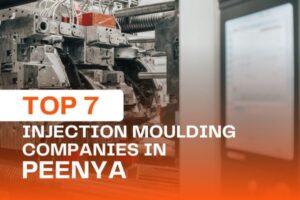The 3 Plate Mold: Structure and Principles of Operation
In the world of injection molding, precision and efficiency are paramount. Manufacturers aim to produce high-quality plastic parts and products with consistency, speed, and cost-effectiveness. To achieve this, they often turn to advanced molding techniques and tools, such as the 3 plate mold. In this guide, we will delve into the intricacies of the 3 plate mold, exploring its structure, design principles, and operation.
Understanding the 3 Plate Mold
A 3 plate mold is a specialized type of injection molding tool designed to produce complex, multi-component plastic parts. Its name is derived from its structure, which consists of 3 distinct plates that enable the molding of intricate shapes with multiple parts in a single operation. These molds are particularly useful when manufacturers need to create components with different materials, colors, or surface textures in a single shot.
The Structure of a 3 Plate Mold
The structure of a 3 plate mold is integral to its operation and its ability to create complex plastic parts efficiently. Let’s break down the components of this mold:
A – Cavity Plate: The cavity plate, often referred to as the “A-plate,” contains the impression of the desired part to be molded. It is the stationary part of the mold that remains in place during the injection process. The cavity plate’s shape corresponds to the external shape of the finished plastic part.
B – Core Plate: The core plate, known as the “B-plate,” contains the mold core. This plate is responsible for shaping the inner dimensions of the part. The core plate moves in conjunction with the cavity plate to allow for the separation of the molded part.
C – Stripper Plate: The stripper plate, sometimes referred to as the “C-plate,” serves an essential role in the 3 plate mold. It functions as an intermediary plate between the cavity and core plates, providing the means to strip the molded part from the core during the ejection phase. This plate moves independently from the other two plates, contributing to the separation of the finished part.
The interaction of these 3 plates allows for the simultaneous injection and ejection of the part, making it an excellent choice for producing complex plastic components.
Principles of Operation
Now that we’ve examined the structure of a three plate mold let’s delve into the principles of its operation.
1. Clamping Phase:
The process begins with the clamping phase, where the cavity plate, core plate, and stripper plate are aligned and clamped together. This clamping ensures that there is a secure and leak-proof seal between the plates.
2. Injection Phase:
During the injection phase, molten plastic material is forced into the mold cavity through a sprue or a runner system. The plastic material fills the space between the cavity and core plates, taking on the desired shape as it cools and solidifies.
3. Cooling Phase:
After the injection phase, the mold remains closed, and the plastic inside begins to cool and solidify. The cooling phase duration varies depending on factors like material type, part thickness, and design complexity.
4. Ejection Phase:
In the ejection phase, the stripper plate moves independently to strip the molded part from the core. This separation is crucial in ensuring that the part is removed without damage. After stripping, the mold can be opened, and the finished part is ready for removal.
5. Mold Open and Repeat:
Once the part is removed, the mold can be opened, and the process can be repeated for the next cycle.
Advantages of 3 Plate Molds
3 plate molds offer several advantages for manufacturers:
1. Complex Part Design:
These molds are ideal for creating complex parts with multiple components, such as overmolded parts or parts with inserts.
2. Efficiency:
The ability to produce multi-component parts in a single cycle increases production efficiency and reduces manufacturing time.
3. Cost-Effective:
While the initial investment in a 3 plate mold may be higher, the efficiency gains and reduced labor costs can lead to significant cost savings over time.
4. Quality:
These molds ensure a high level of precision and consistency in part production.
Design Considerations for 3 Plate Molds
To maximize the advantages of 3 plate molds, careful design is essential. Here are some critical design considerations:
1. Parting Line:
The parting line, where the cavity and core plates meet, should be strategically chosen to minimize the impact on the part’s appearance and function.
2. Ejection Mechanism:
The design of the stripper plate and ejection system must be well thought out to ensure smooth and damage-free part ejection.
3. Material Selection:
Choosing the right material for the mold is crucial. It should be durable, heat-resistant, and able to withstand the stresses of the injection process.
4. Runner and Gate Design:
The runner and gate system must be designed to facilitate proper filling of the mold and minimize the occurrence of defects such as air traps or weld lines.
Conclusion
In the world of injection molding, the 3 plate mold stands out as a versatile and efficient tool for producing complex plastic parts. Its unique 3-plate structure, combined with precise design principles, allows manufacturers to create high-quality components with speed and precision. As the demand for intricate and multi-component parts continues to grow, the 3 plate mold is likely to remain a valuable asset in the manufacturing industry.
By understanding the structure and principles of operation of 3 plate molds, manufacturers can harness the full potential of this technology and achieve the consistent production of quality plastic parts. Careful consideration of design factors ensures that the mold is optimized for the specific needs of the project, making the 3 plate mold an indispensable tool in modern manufacturing.




